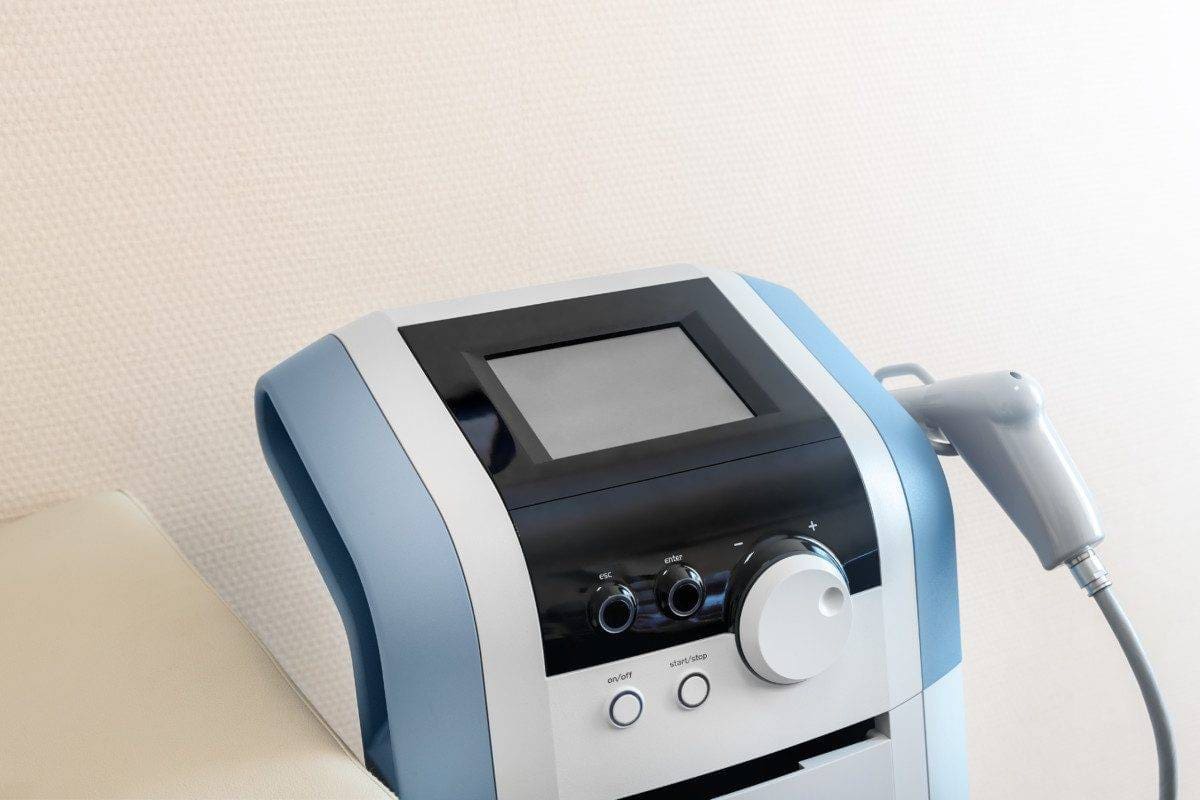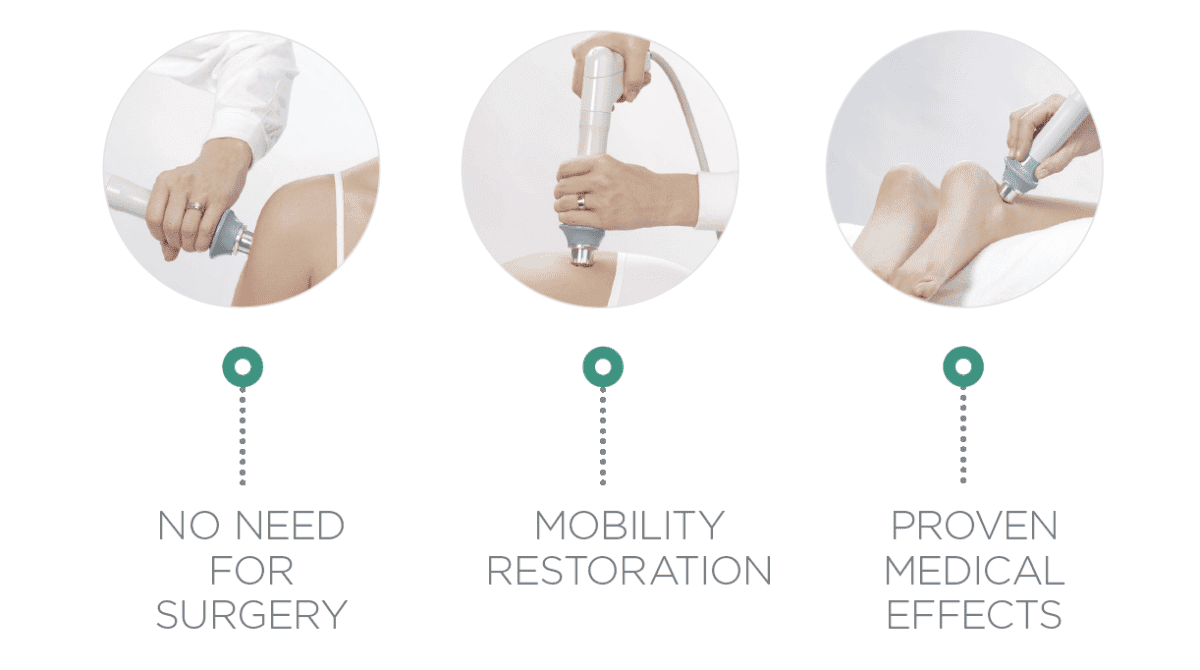By Dr. Liam Johnston, DC
Shockwave Therapy. What is it? What is a shockwave? What is it used to treat? These are all questions that are frequently asked when shockwave therapy is a proposed treatment modality. Extracorporeal Shockwave Therapy (ESWT) simply means that the shockwave originates outside the body and is driven into the tissue. It is a relatively new treatment modality, and as such, there is a fair amount of misrepresentation about what exactly it is. The purpose of this article is to explain exactly what shockwave therapy is and why it is being used as an effective treatment option at an increasing rate.
Shockwave Therapy’s History
Extracorporeal Shockwave Therapy was first introduced into clinical practice back in the 1980s as an effective and non-invasive method of treating most kidney, salivary, and urinary calculi (also known as stones). The ability to be able to disintegrate stones by shockwaves offered the potential for transfer of this therapy to other concerns – neo-calcifications in musculoskeletal disorders chief among them. Then, in 1993, the dissolution of calcium deposits in calcific tendonitis of the rotator cuff was clearly documented by X-rays, which prompted further research into shockwave’s potential for benefit. At an early stage in its development and discovery, enthesopathic neo-calcifications of the tendon insertion area of plantar fascia seemed sufficiently physiologically similar to prompt exploration of the effects of shockwave therapy in chronic plantar heel pain. The initial idea was to disintegrate the heel spur by ESWT, but to date, no study existed reporting spur ‘disappearance’. That said – clinical studies seemed to indicate a very high effectiveness of shockwave therapy for treating painful plantar heel spurs, with an average pain relief success rate of 81%. This success rate was superior to other conservative or even operative treatment options when the injury is in the chronic phase. At this point, shockwave took off, and in the last couple of decades, it has transitioned into being used as a method for treating numerous musculoskeletal disorders and even stimulation of bone growth. In contrast to the kind of shockwaves used to break up kidney stones – lithotripsy – orthopedic shockwaves are not being used to disintegrate tissue, but rather to microscopically cause interstitial and extracellular responses which can lead to tissue regeneration.

So what IS a shockwave? Shockwaves are high-energy sound waves produced underwater with a high voltage explosion and then evaporation. The kinetic energy of this is then transferred to the transmitter at the end of the applicator and travels into the tissue. There are two types of shockwaves that are used in clinical settings: focused and radial shockwaves. These are two technically distinct forms of shockwave therapy, and it has been argued that focused shockwave therapy and radial shockwave therapy should be viewed as distinctly different therapeutic modalities as a result of the differences in their physical characteristics, method of energy generation, and shockwave propagation. But? Focused and radial shockwave types share common clinical indications in a list of conditions. Focused shockwaves are generated through mechanisms that convert electrical energy into kinetic energy, while radial shockwaves are generated pneumatically, without the use of electricity, and are proposed to have a more surface-level effect. The proposed mechanism of action for Shockwave Therapy is based on something called mechano-transduction: the delivery of mechanical acoustic energy to the target tissue, which induces molecular, cellular, and tissue responses. Based on animal studies, shockwave therapy has been shown to promote the expression of various angiogenic and osteogenic growth factors such as vascular endothelial growth factor (VEGF) and bone morphogenetic protein (BMP) – complicated terms that essentially mean the results can promote an increase in blood supply and tissue regeneration which positively influences the healing process of injured tissue.

Indications
Shockwave therapy is often recommended as a secondary conservative treatment choice for stubborn musculoskeletal conditions that have been unresponsive to standard conservative care. Some conditions that are commonly considered for shockwave therapy as a treatment option include:
- Plantar fasciitis
- Achilles tendonitis/tendinopathy
- Patellar tendinopathy (jumper’s knee)
- Calcific and non-calcific shoulder tendinopathy
- Lateral and medial epicondylitis (tennis/golfer’s elbow)
Bone and cartilage-related disorders such as nonunion of fractures (fractures that will not heal), osteonecrosis of the femoral head – lack of blood flow causing the death of bone cells – and knee osteoarthritis related bone marrow edema (BME) are also among the range of conditions that have the potential for positive outcomes from shockwave therapy. As mentioned earlier, because shockwave therapy is a relatively new treatment modality, there is a strong need for further high-level studies. In addition, the pain-relieving effect of shockwave on tendinopathies has been consistently observed in both case series and prospective randomized control trials in the published literature. With extremely limited reports of severe adverse effects as a result of ESWT, it is now considered a viable non-invasive procedure, which requires very little recovery time, and shows much promise as an alternative to surgical intervention in chronic musculoskeletal injuries.

An important aspect that should be addressed when considering if shockwave therapy is the right treatment for a specific injury is whether that injury site is currently in an active inflammatory state. Shockwave therapy is of most benefit in chronic, long-standing, stubborn injuries. Caution should be advised when considering shockwave for any acute injury. Shockwave therapy can be a very effective and low-risk treatment option when other conservative management has been ineffective. If you are dealing with chronic injury or pain, seek out the advice of a healthcare professional who can properly diagnose the problem and assess whether shockwave therapy will be a beneficial treatment option for you!

